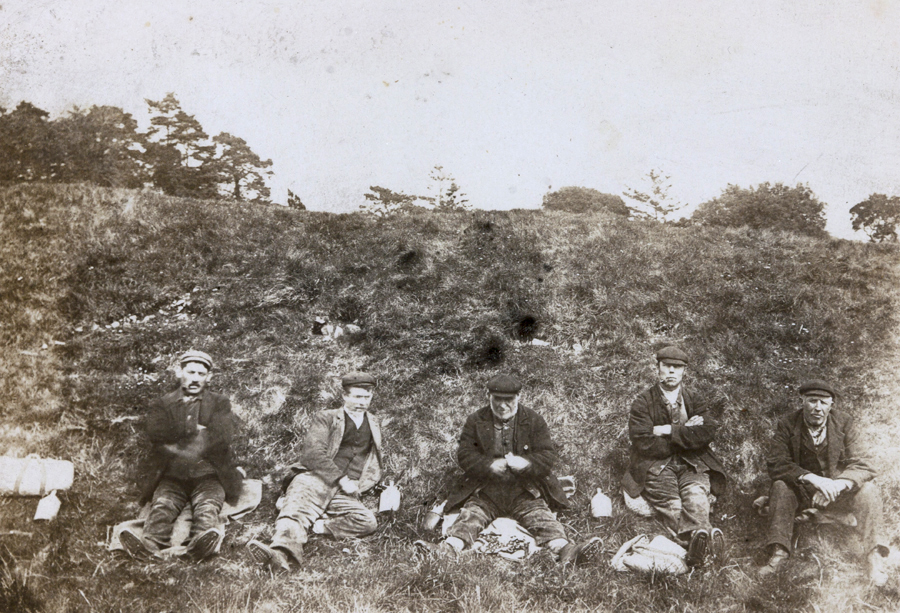Strictly speaking Penpole Point shouldn’t form part of the historic Kings Weston landscaped parkland; it has always been common land, separated from the private grounds by a stout estate wall, guarded by lodges. The land was of no agricultural use, exposed, and only offered sparse common grazing land, so perhaps little wonder that it was largely valueless and left for people and livestock to roam freely. Add to this the spectacular views once enjoyed looking across the Avon and Severn estuary and the rocky outcrop proved to be a popular destination for visitors and locals alike.
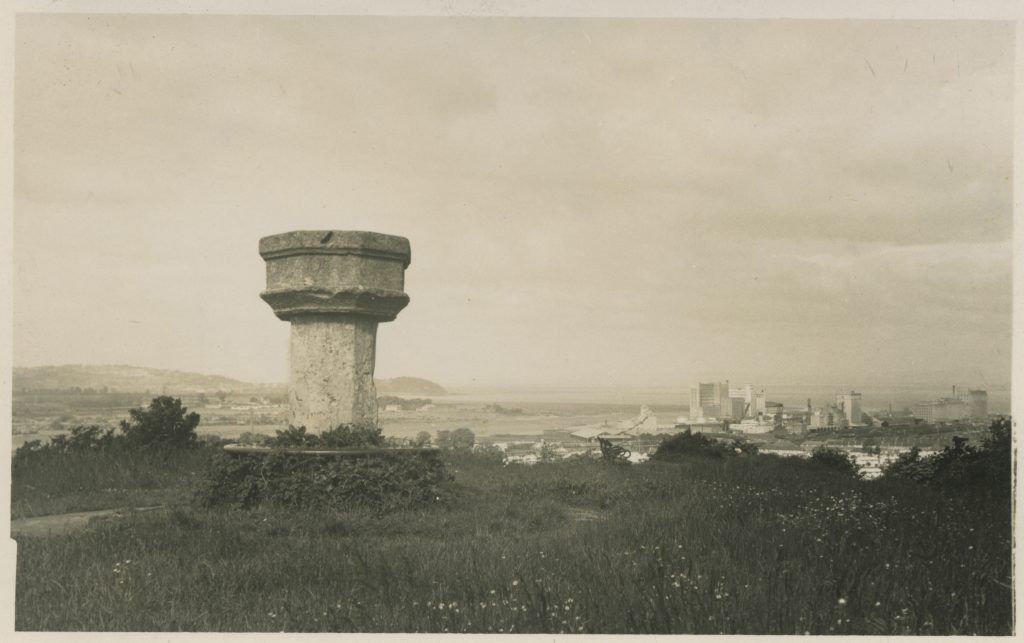
The focus of the Point itself was, and still is, the stone dial with its circular bench. Often misunderstood as an ornamental sundial it is in fact a 17th Century marker, set up by the Merchant Venturers, and used as a landmark by seafarers to calculate the safe passage into the mouth of the Avon. The bench was originally a wooden platform to access the upper surface of the dial and the carved compass on its top surface, likely used to take crude bearings for the location of ships moored in the channel. Whatever it’s intended use it provided a convenient bench for visitors to sit and take in the vast panorama below.
With greater appreciation of the picturesque and sublime that developed in the Georgian era the Point, with its rocky edges, and exposed situation appealed to the senses; at once beautiful, but simultaneously perilous and vulnerable to nature’s elemental forces. Notable artists came here to try and capture that experience, and whose paintings now appear in the collections of museums and galleries internationally.
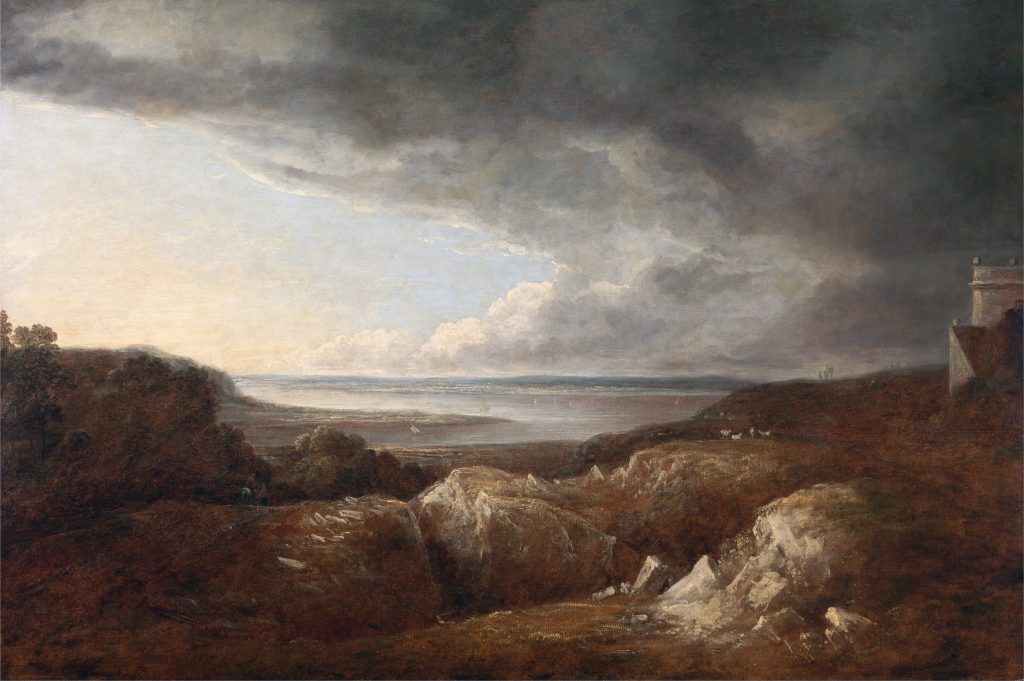
Our perception of the Point is today largely marred by the trees that have grown up, particularly on the west side, that rob the visitor of views of the ground on that side, and of an appreciation of the height and nature of the sudden drop. Hidden too are the exposed rocky outcrops and projecting slabs that once added to the rugged character; you can still find these in exposed spots beneath the Point, where the suffocating ivy relents and the thrusting geological beds create sheltered alcoves.
The wood that’s grown along this western edge has grown up since regular grazing ended on the common land; we don’t know when, but probably around the 1930s, perhaps after WWII. Views from the point are still remembered from as recently as the 1980s, but since then the onslaught of self-seeded ash and sycamore has cloaked the slope. For the intrepid explored it’s still worth trekking through the woodland, passing through the hummocks of former quarries and below “The Rocks”.
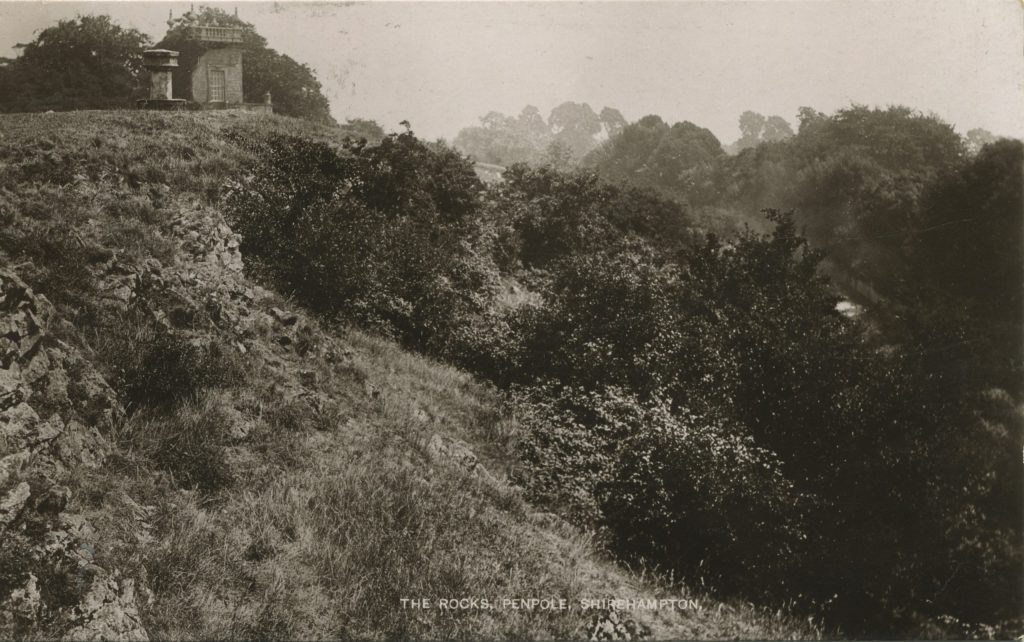
The area was as popular recreation space as the Point itself, offering the visitor a rugged playground of exposed rocks and little dells. It was popular for picnickers seeking for a more convivial, sheltered spot than the open ground above the Point. It was also the location chosen for a series of famous local events; the open air church services. These were begun in 1910 by the local Vicar, Rev Powell, a provocative figure who was seldom far from controversy. The Rocks most likely provided a physical reminder of the hill of Calvary, fundamental to the Easter story. A makeshift pulpit was set up against Penpole Lane and the assembled crowd could gather in a natural amphitheatre of the rocks opposite to listen to the sermon and sing.
In the Rev Powell’s own words, written in 1914:
“In the year 1910, 1911, 1911, and 1912 we held open air services in those beautiful surroundings. On Easter Monday of both this year and of last year, although no longer vicar of the parish, I repeated these services. The singing by a special choir, ably led by Mr Milton of Clifton, has always been a helpful feature. The natural formation of this valley-like spot lent itself to the sound of many voices”
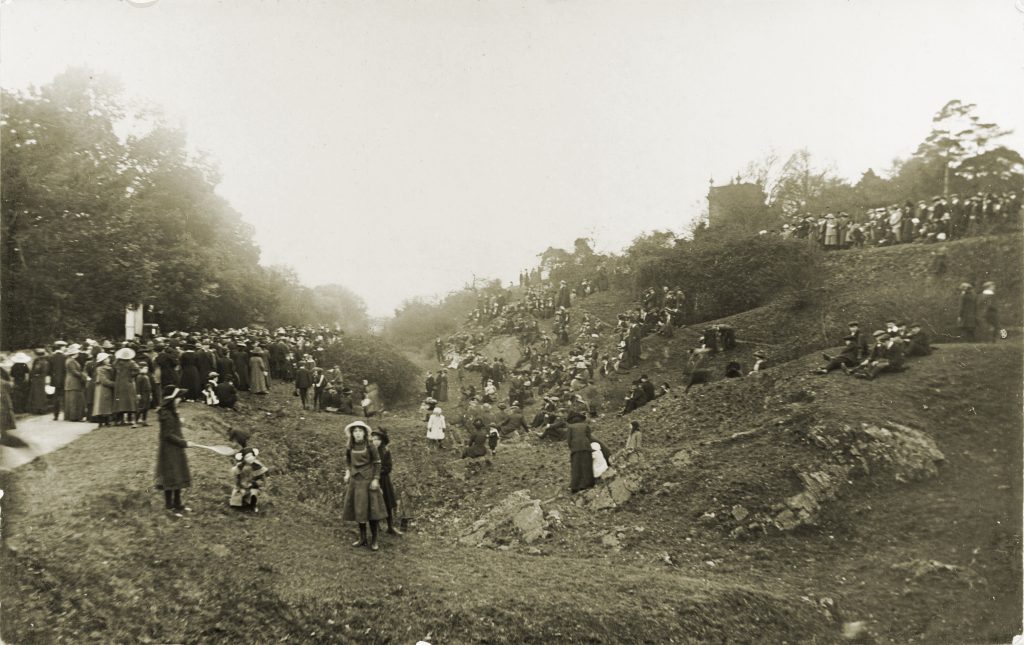
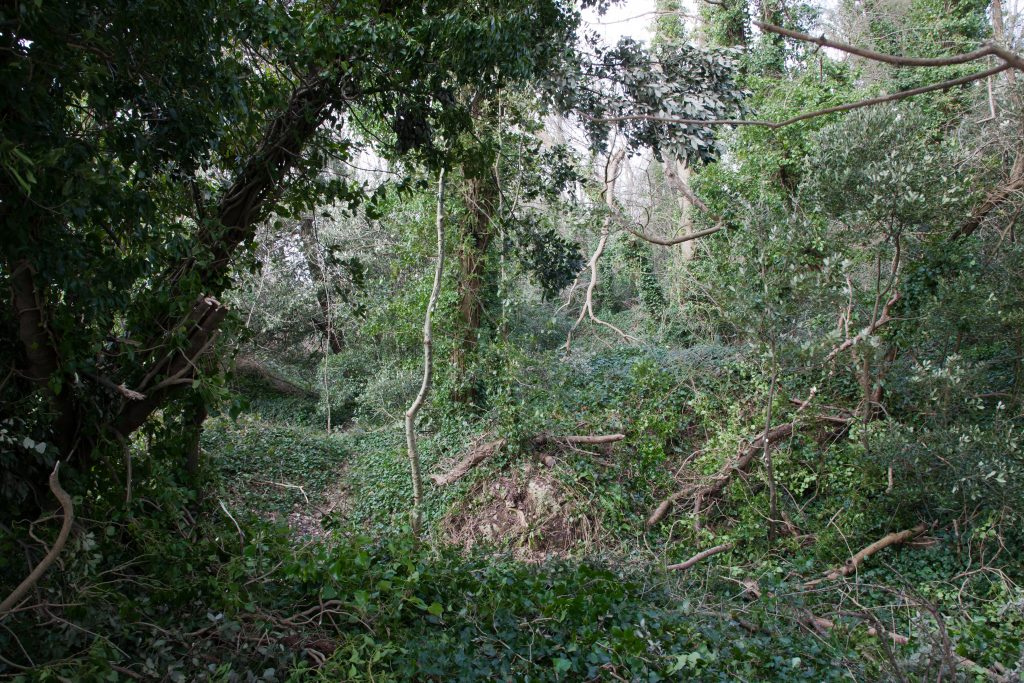
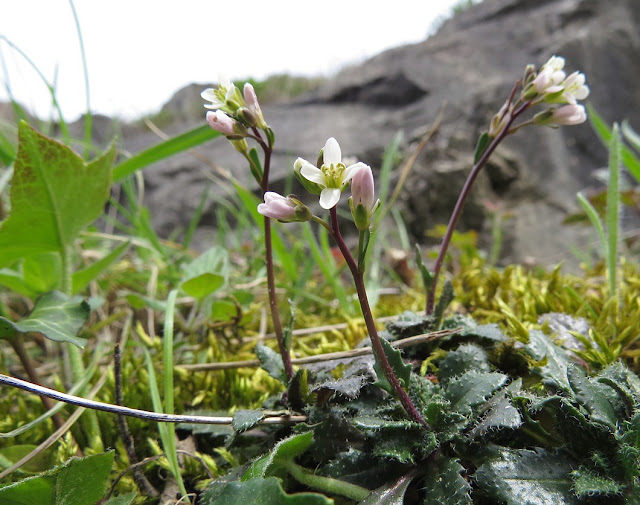
Sadly the regular events ended in bitterness after a new vicar came to Shirehampton in 1912, and the Rev Powell’s continuation of “rival” services at Penpole caused friction. Powell to put his own side of the story in his book “Recent persecution in the church of England”.
It was this more rugged side of Penpole Point that offered rare habitat to Bristol Rockcress, a variety of wildflower found only in the Avon Gorge and, once here too. The crevices between rocks offered protection for the tiny plants. Like the drama of the place these too have succumbed to the growth of the trees and onslaught of ivy, overshadowing this once-unique habitat.
